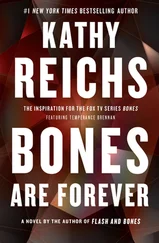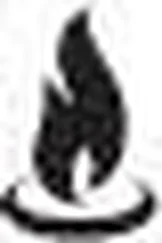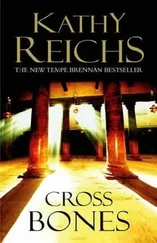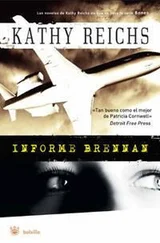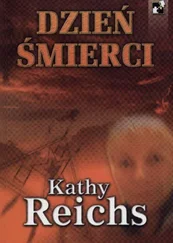Kathy Reichs - Grave Secrets
Здесь есть возможность читать онлайн «Kathy Reichs - Grave Secrets» весь текст электронной книги совершенно бесплатно (целиком полную версию без сокращений). В некоторых случаях можно слушать аудио, скачать через торрент в формате fb2 и присутствует краткое содержание. Жанр: Старинная литература, на английском языке. Описание произведения, (предисловие) а так же отзывы посетителей доступны на портале библиотеки ЛибКат.
- Название:Grave Secrets
- Автор:
- Жанр:
- Год:неизвестен
- ISBN:нет данных
- Рейтинг книги:4 / 5. Голосов: 1
-
Избранное:Добавить в избранное
- Отзывы:
-
Ваша оценка:
- 80
- 1
- 2
- 3
- 4
- 5
Grave Secrets: краткое содержание, описание и аннотация
Предлагаем к чтению аннотацию, описание, краткое содержание или предисловие (зависит от того, что написал сам автор книги «Grave Secrets»). Если вы не нашли необходимую информацию о книге — напишите в комментариях, мы постараемся отыскать её.
Grave Secrets — читать онлайн бесплатно полную книгу (весь текст) целиком
Ниже представлен текст книги, разбитый по страницам. Система сохранения места последней прочитанной страницы, позволяет с удобством читать онлайн бесплатно книгу «Grave Secrets», без необходимости каждый раз заново искать на чём Вы остановились. Поставьте закладку, и сможете в любой момент перейти на страницу, на которой закончили чтение.
Интервал:
Закладка:
I am used to the aftermath of death. I am familiar with the smell of it, the sight of it, the idea of it. I have learned to steel myself emotionally in order to practice my profession.
But the old woman was breaking through my determined detachment.
Another wave of vertigo. The altitude, I told myself, lowering my head and breathing deeply.
Though my home bases are North Carolina and Quebec, where I serve as forensic anthropologist to both jurisdictions, I’d volunteered to come to Guatemala for one month as temporary consultant to the Fundación de Antropología Forense de Guatemala. The Guatemalan Forensic Anthropology Foundation, FAFG, was working to locate and identify the remains of those who vanished during the 1962 to 1996 civil war, one of the bloodiest conflicts in Latin American history.
I’d learned a lot since my arrival one week before. Estimates of the missing ranged from one to two hundred thousand. The bulk of the slaughter was carried out by the Guatemalan army and by paramilitary organizations affiliated with the army. Most of those killed were rural peasants. Many were women and children.
Typically, victims were shot or slashed with machetes. Villages were not always as fortunate as Chupan Ya. There they’d had time to hide their dead. More often, bodies were buried in unmarked mass graves, dumped in rivers, left under the ruins of huts or houses. Families were given no explanations, no lists of those missing, no records. A UN Commission for Historical Clarification referred to these massacres as a genocide of the Mayan people.
Families and neighbors referred to their missing members as the “desaparecidos.” The disappeared. The FAFG was trying to find them, or, more accurately, their remains. And I had come to help.
Here in Chupan Ya, soldiers and civil patrollers had entered on an August morning in 1982. Fearing they’d be accused of collaborating with the local guerrilla movement and punished, the men fled. The women were told to gather with their children at designated farms. Trusting, or perhaps fearing, the military, they obeyed. When the soldiers located the women where they’d been sent, they raped them for hours, then killed them along with their kids. Every house in the valley was burned to the ground.
Survivors spoke of five mass graves. Twenty-three women and children were said to lie at the bottom of the well behind Señora Ch’i’p.
The old woman continued her story. Over her shoulder I could see the structure we’d erected three days earlier to protect the well site from rain and sun. Backpacks and camera cases hung from metal uprights, and tarps covered the opening of the pit beneath. Boxes, buckets, shovels, picks, brushes, and storage containers lay as we’d left them early that morning.
Rope had been strung from pole to pole around the excavation to create a boundary between spectators and workers. Inside the restraint sat three idle members of the FAFG team. Outside it stood the villagers who came each day to observe in silence.
And the police guards who’d been told to shut us down.
We’d been close to uncovering evidence when we received the order to halt. The soil had begun yielding ash and cinders. Its color had changed from mahogany to graveyard black. We’d found a child’s hair clip in the sifting screen. Fragments of cloth. A tiny sneaker.
Dear God. Did the old woman’s family really lie only inches below the point at which we’d stopped?
Five daughters and nine grandchildren. Shot, macheted, and burned in their home together with neighboring women and children. How does one endure such loss? What could life offer her but endless pain?
Shifting my gaze back to the surrounding countryside, I noted half a dozen farmsteads carved out of the foliage. Adobe walls, tile roofs, smoke curling from cooking fires. Each had a dirt yard, outdoor privy, and an emaciated brown dog or two. The wealthier had chickens, a scrawny hog, a bicycle.
Two of Señora Ch’i’p’s daughters had lived in the cluster of huts halfway up the eastern escarpment. Another had lived on top, where we’d parked the FAFG vehicles. These women were married; she didn’t remember their ages. Their babies were three days, ten months, two, four, and five years old.
Her youngest daughters were still at home. They’d been eleven and thirteen.
Families, connected by a network of footpaths, and by a network of genes. Their world was this valley.
I imagined Señora Ch’i’p returning that day, perhaps descending the same dirt trail our team struggled down each morning and up each evening. She had sold her beans. She was probably happy.
Then horror.
Two decades is not long enough to forget. A lifetime is not long enough.
I wondered how often she thought of them. Did their phantoms walk with her as she trudged to market, following the same course she’d taken the fatal day? Did they slip past the tattered rag covering her window when darkness claimed the valley each night? Did they people her dreams? Did they come to her smiling and laughing as they’d been in life? Or bloodied and charred as she’d found them in death?
My vision blurred, and I dropped my head again, stared at the dirt. How was it possible for human beings to do that to other human beings? To helpless and unresisting women and children? In the distance, I heard the rumble of thunder.
Seconds, maybe years later, the interview stopped, an untranslated question left dangling in space. When I looked up Maria and her interpreter had shifted their attention to the hill behind me. Señora Ch’i’p remained focused on her sandals, hand to cheek, fingers curled like a newborn’s.
“Mateo’s back,” said Elena Norvillo, an FAFG member from the El Petén region. I turned as she pushed to her feet. The rest of the team observed from under the tent.
Two men were working their way down one of the many footpaths that meandered through the gorge, the leader in blue windbreaker, faded jeans, brown cap. Though I couldn’t read them from where I sat, I knew the letters above his brim said FAFG. The six of us waiting wore identical caps. The man following was suited and tied and carried a collapsible chair.
We watched the pair pick their way through scraggly corn surrounded by a half dozen subsidiary crops, careful to damage nothing. A bean seedling. A potato plant. Minor to us, but critical food or income to the family that owned it.
When they drew within twenty yards, Elena shouted.
“Did you get it?”
Mateo gave a thumbs-up.
The injunction to suspend excavation had come from a local magistrate. According to his interpretation of the exhumation order, no work was to proceed outside the presence of a judge, the Guatemalan equivalent of a district attorney. Visiting early this morning and finding no judge on site, the magistrate had ordered digging halted. Mateo had gone to Guatemala City to have this ruling overturned.
Mateo led his companion directly to the two uniformed guards, members of the National Civil Police, and produced a document. The older cop shifted the strap of his semiautomatic, took the paper and read, head down, shiny black bill reflecting the dimming afternoon light. His partner stood with foot thrust forward, a bored expression on his face.
After a brief exchange with the suited visitor, the senior cop returned the order to Mateo and nodded.
The villagers watched, silent but curious, as Juan, Luis, and Rosa stood and exchanged high fives. Mateo and his companion joined them at the well. Elena followed.
Crossing to the tent, I glanced again at Señora Ch’i’p and her adult son. The man was scowling, hatred seeping from every pore. Hatred for whom? I wondered. For those who had butchered his family? For those who had come from a different world to disturb their bones? For distant authorities who would block even that small effort? For himself for having survived that day? His mother stood woodenly, face impassive.
Читать дальшеИнтервал:
Закладка:
Похожие книги на «Grave Secrets»
Представляем Вашему вниманию похожие книги на «Grave Secrets» списком для выбора. Мы отобрали схожую по названию и смыслу литературу в надежде предоставить читателям больше вариантов отыскать новые, интересные, ещё непрочитанные произведения.
Обсуждение, отзывы о книге «Grave Secrets» и просто собственные мнения читателей. Оставьте ваши комментарии, напишите, что Вы думаете о произведении, его смысле или главных героях. Укажите что конкретно понравилось, а что нет, и почему Вы так считаете.



